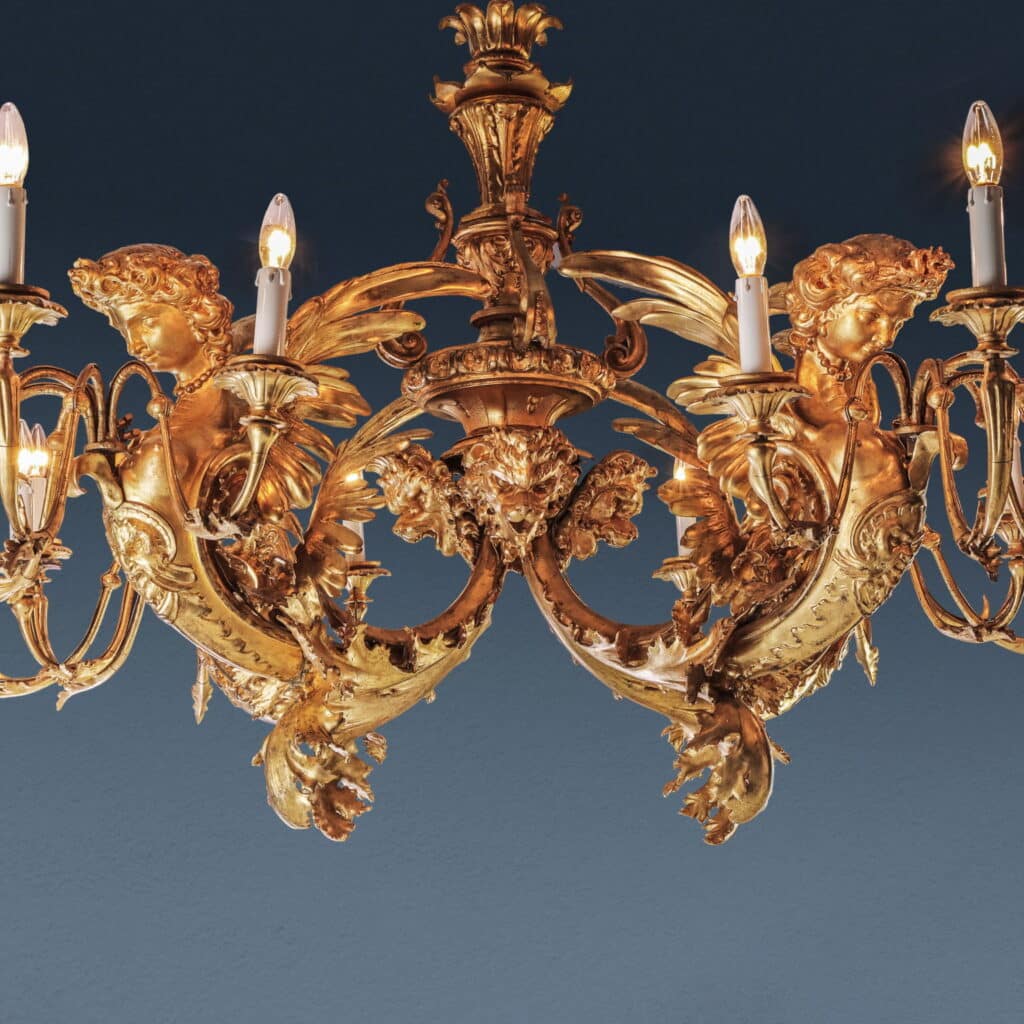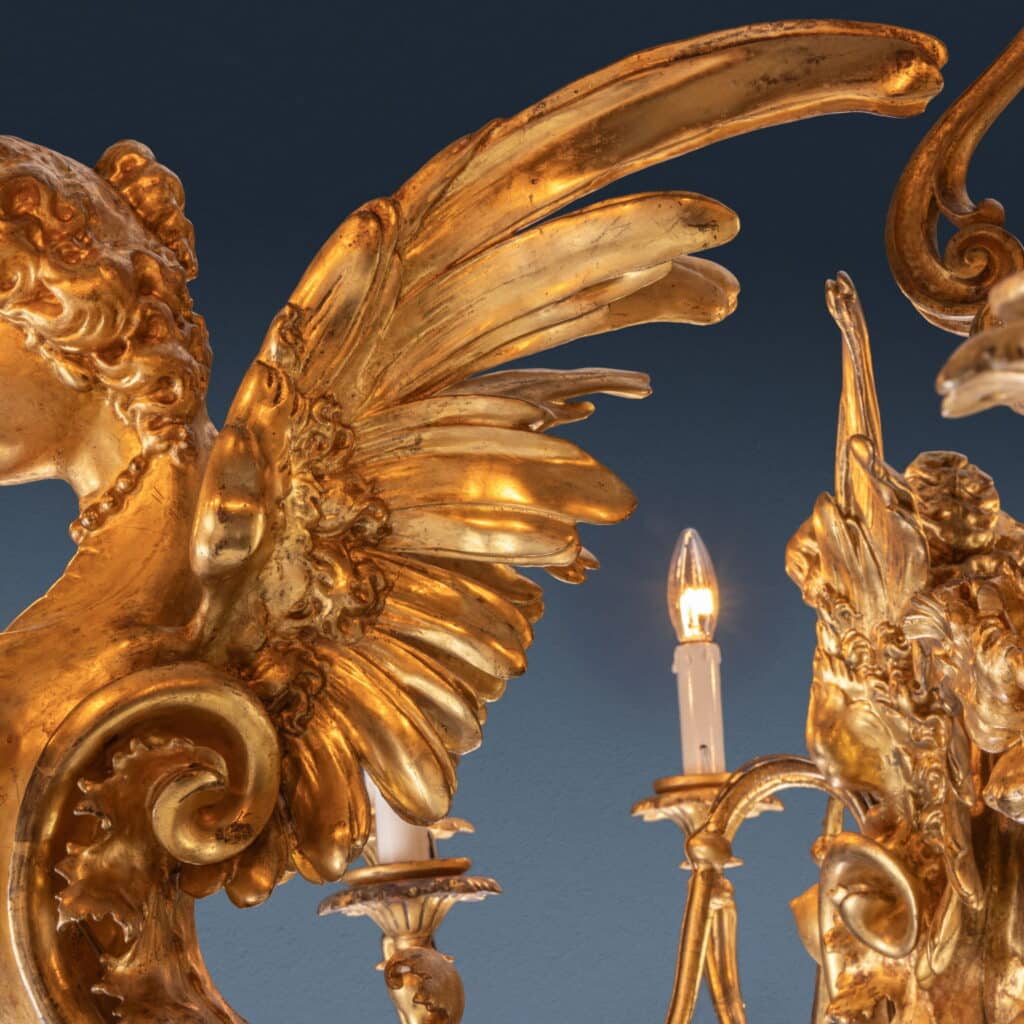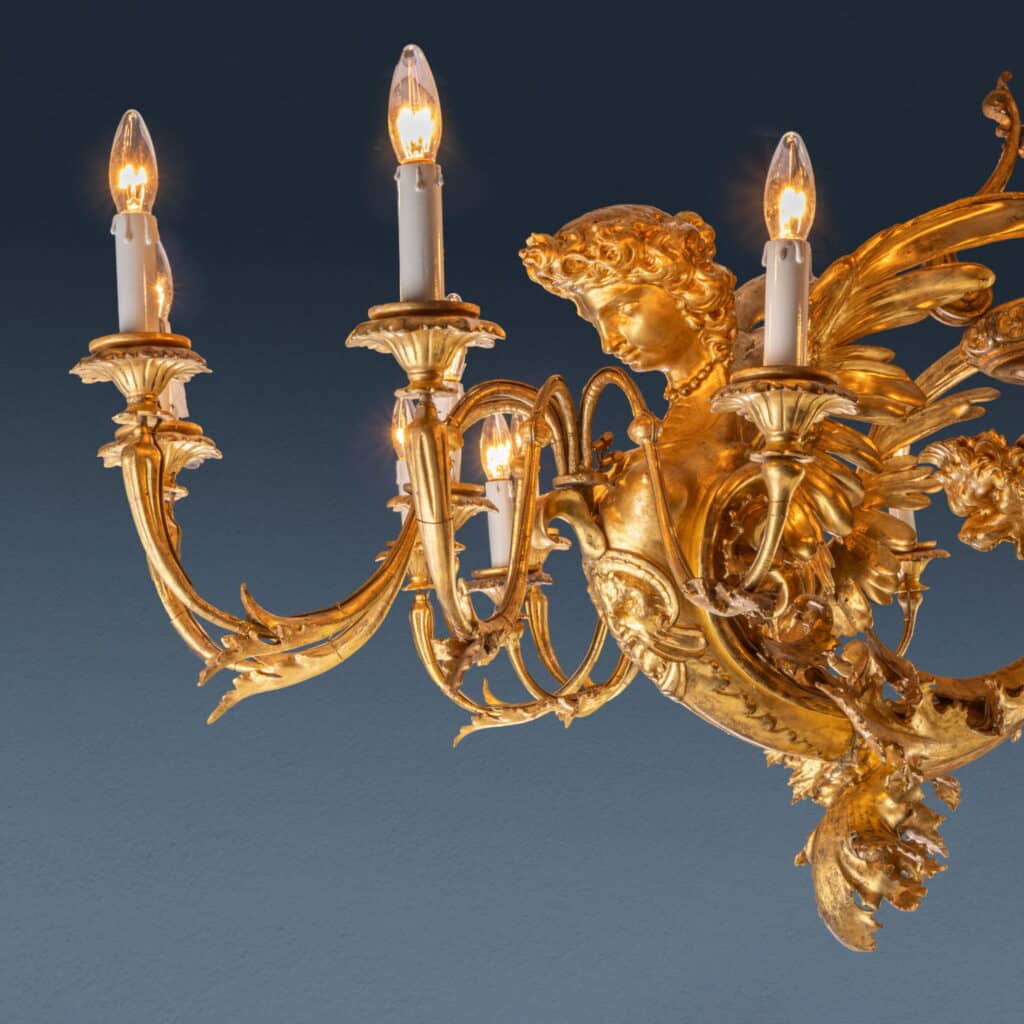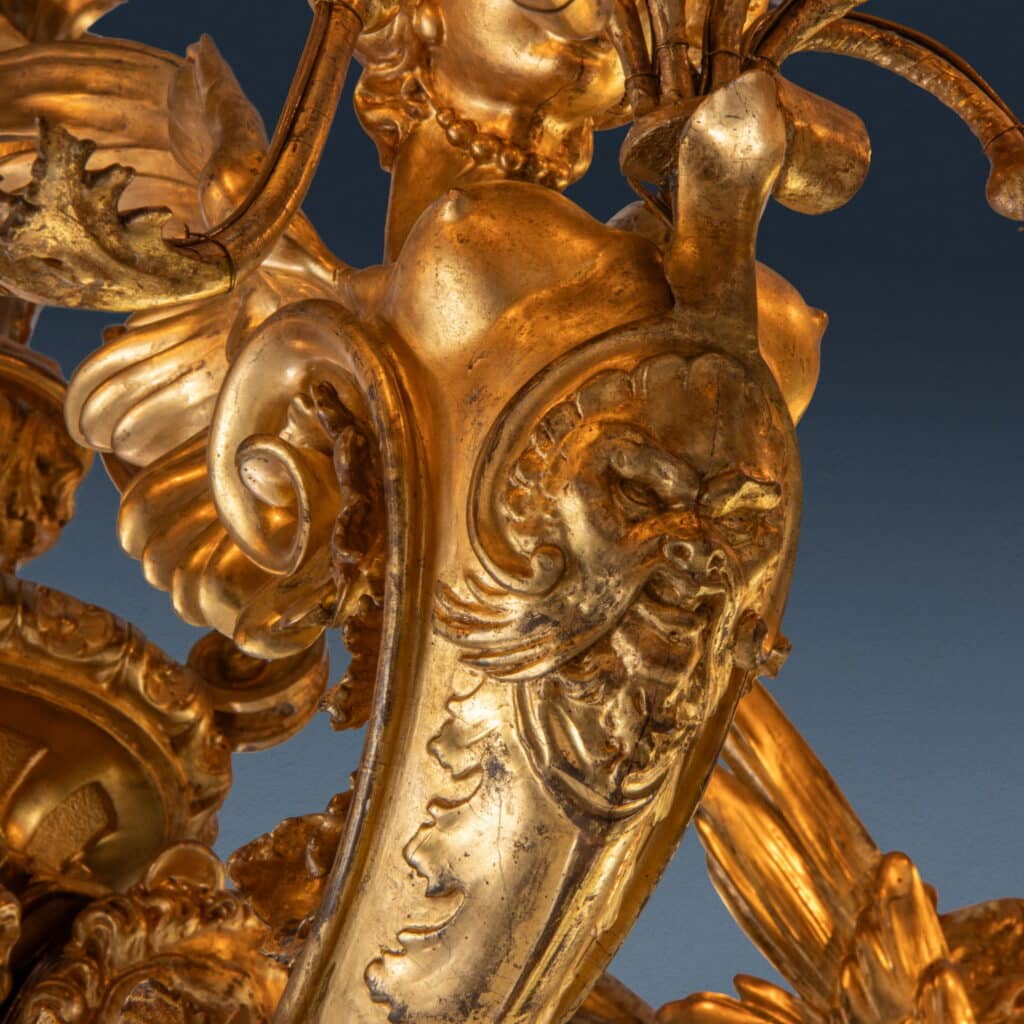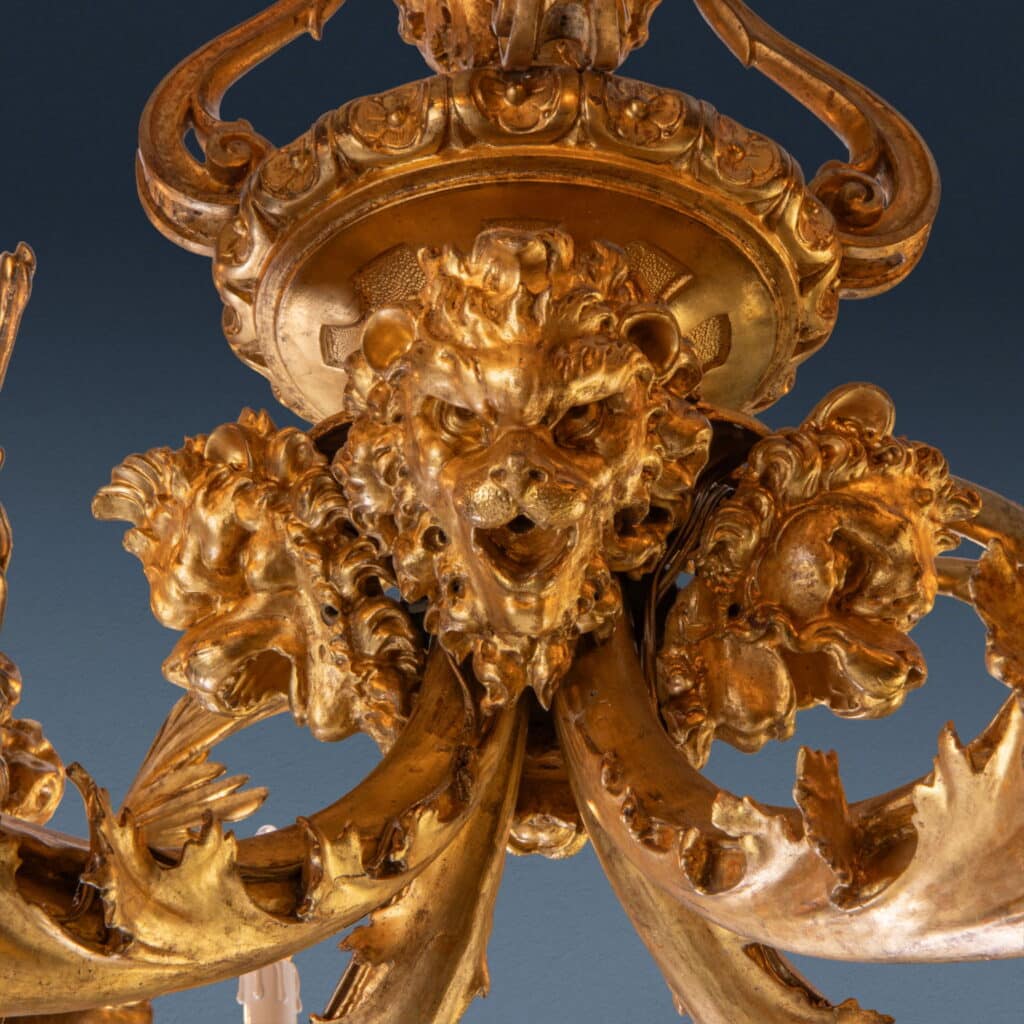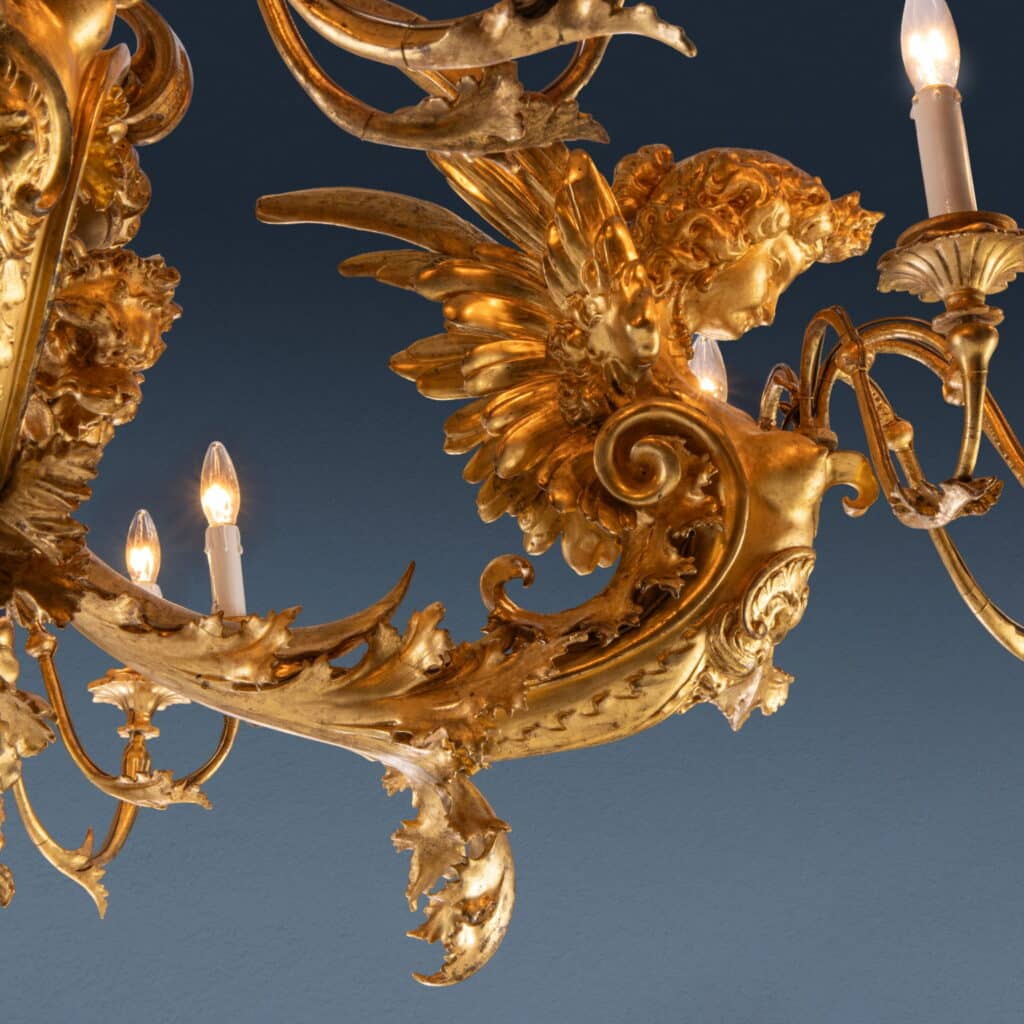Chandelier, attributable to Francesco Morini’s Boutique (1822-1899). Florence, 1860 ca.
Description:
Wooden chandelier with carved and gilded metal applications. The central body, carved with floral and leaf motifs, is adorned in the lower part with four lion’s heads, alternating with four arms carved with curled leaf volutes and ending with busts of winged sirens; from each of these five more arms waved with floral corolla bobeches branch out.
It had been electrified successively.
Dimensions: h. 97 cm, diam. 170 cm
CODE: ANILLA0077894
Historical-critical analysis:
Francesco Morini was active with his Florentine workshop from 1848 until his death in 1899. One of the most important and prolific carvers in the city in the second half of the 19th century, he was called together with master Ranieri Bardi by the Court Wardrobe to make some of the furnishings for the Sala Celeste (light blue room) in the Quartiere delle Stoffe at Palazzo Pitti. In particular, he was responsible for the lumiera ‘dei tritoni’, a large and scenographic chandelier that was a great success at the time, so much so that a few years later he was commissioned to make another even more impressive one with its 120 lumens, this time at the request of Baroness Fiorella Favard de l’Anglande. The noblewoman had in fact entrusted the famous architect Giuseppe Poggi with the renovation of her palace near the Arno river, involving some of the most important manufactures for the decoration of the rooms. Morini was probably in charge of the furnishings in the Ballroom, including the aforementioned chandelier that still stands there today and eight wall sconces that have unfortunately disappeared (the furniture was sold at auction by the end of the century).
An analysis of these furnishings fully demonstrates the style of our carver, i.e. a revival of Renaissance stylistic features in the manner of grotesques, which are however reworked with powerful carvings and gilding in full accordance with the Neo-Baroque eclectic taste of the period.
For stylistic reasons and the high quality and refinement of the carving, our chandelier can be attributed to the boutique of Francesco Morini. The shape and dimensions suggest that it was originally a larger chandelier that was later reduced in size.
Bibliography:
Simone Chiarugi, Botteghe di Mobilieri in Toscana. 1780-1900, S.P.E.S., Firenze, 1994.
- English chandelier, first half of the 19th century

Antiques, Art and Design
FineArt is the new ambitious Di Mano in Mano project that offers an exclusive choice of antiques and design works, presenting them for their singularity and uniqueness.


